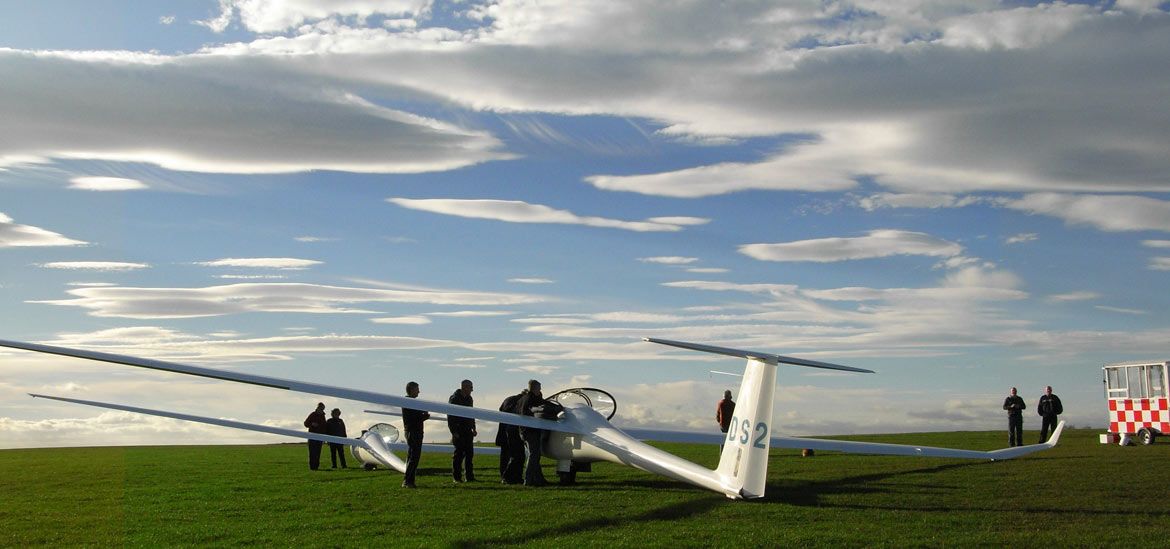I was in England on business—some sort of software event in London, the details long since faded and obscured. But this day, this day … the memories surge back, filling out in technicolor as I write and research, a kind of archaeological dig through both memories and the vast web of resources now at my fingertips about the people, places, and things we encountered this day.
It was early June 1987, and I was fortunate in that my wife was able to make the trip with me. Beth was eight months pregnant with our first child, Jennifer, who expressed pre-natal delight at the novelty of air travel with kicks and backflips. We had only a handful of extra days for sightseeing; just time enough, really, for a single destination.
Yorkshire & James Herriot
That destination wasn’t difficult to choose. Beth and I had both fallen in love with Yorkshire second hand, via James Herriot’s All Creatures Great and Small, which describes the author’s life as a country vet in the Yorkshire Dales. Beth asked around and discovered that James Herriot was the pen name of Alf Wight, a working vet who still maintained a surgery in the village of Thirsk up in the moor country of North Yorkshire. So we set off to explore Yorkshire and find the land of All Creatures Great and Small.

The book and the man
We spent a day in southern Yorkshire, thoroughly enjoying the city of York. I had been carefully instructed by a British friend that, while in Yorkshire, I must sample the Old Peculier Ale. I was further instructed that under no circumstance should I settle for Old Peculier served in a bottle; I was instead to find a pub that had the beverage on tap direct from the keg. There was a method to this madness: Old Peculier was (and apparently still is) shipped in oak casks, which contribute significantly to its flavor. I followed my directions carefully, located the Spread Eagle Pub, which had among its varied offerings Old Peculier tapped straight from the oaken keg, and gave it a thorough sampling. Without a doubt, this was the best beer I’ve ever had, then or since.
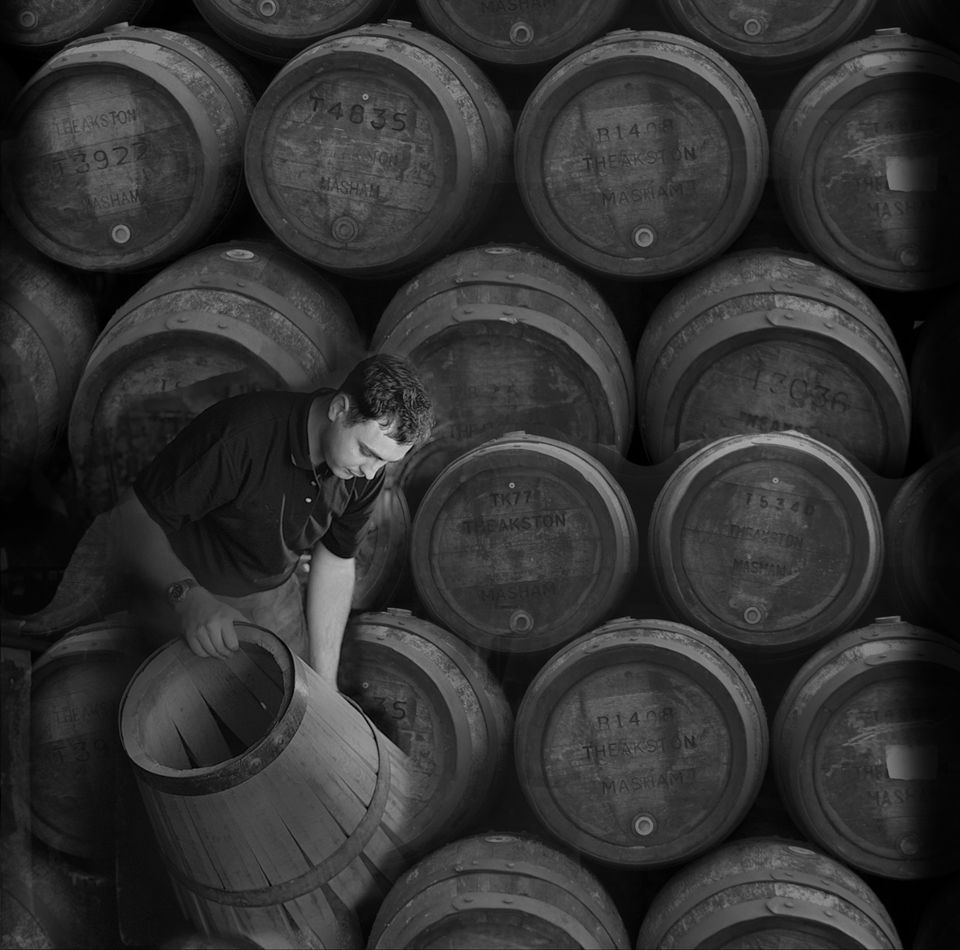
Theakstons, makers of Old Peculier, are proud of their custom-made casks
Thirsk & Alf Wight
The next morning we headed for Thirsk. We asked around and finally located a sign that announced the veterinary surgery of James Alfred Wight, OBE, complete with a vehicle out front containing a pair of muddy, knee-height farm boots, which we of course decided had to be Alf’s. We were tempted to knock on the door, but in the end decided not to make tourist fools out of ourselves, figuring that Mr. Wight might not welcome this kind of intrusion on his place of business. We contented ourselves with visiting the bookstore across the street, buying a couple of hardcover editions of the Herriot books “from the source” so to speak. With our Alf Wight stalking completed, we decided to head out and explore the countryside.
We steered east out of Thirsk on the A170, and before long entered the North York Moors National Park. Soon Sutton Bank appeared in front of us: a striking, 978’ tall cliff, fracturing the countryside for miles to the north and south, edging the great plateau that encompasses the North York Moors. As A170 approached the cliff, we began to see warning signs: Dangerous Grade Ahead. And they weren’t kidding: the Sutton Bank hill has an incredible 25% grade, with a tight hairpin turn halfway up thrown in for good measure; the locals keep a running count of major accidents on this stretch of road. I was uncomfortable enough driving on flat roads, thanks to the right-seated driving and left-handed manual shifting. Somehow, though, with palms sweating heavily, I managed to coax the tiny rental to the top of the Bank without ending up over the cliff, Beth sitting beside me white-faced. Once up, the views were stunning, looking out over the vast green checkerboard of the Vales of York and Mowbray. I am reminded of driving the road from San Francisco through the Sierra foothills into Yosemite valley: both drives invoke sheer terror, followed by—assuming one survives—incredible bliss. Both are places I cherish and intend to revisit.
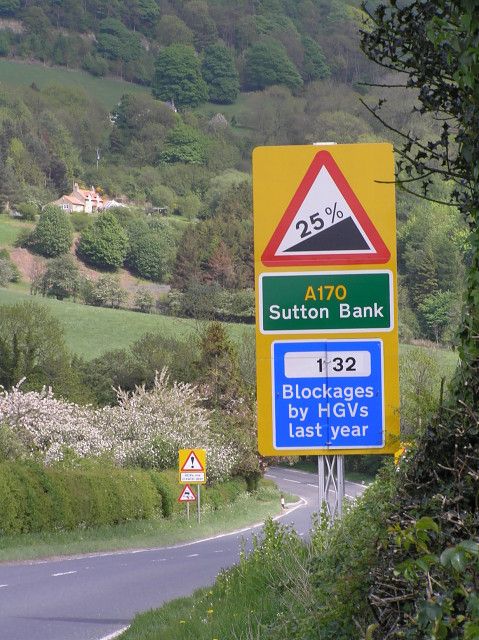
Warning sign for Sutton Bank grade on the A170
Yorkshire Gliding Club
Less than a mile past the top of the Sutton Bank grade, the A170 intersects High Town Bank Road and there we noticed a sign: Yorkshire Gliding Club. I had flown gliders during my mid teens; or more accurately, a particular kind of glider: the venerable, forgiving, stodgy Schweizer 2-33 two-seat trainer.

Schweizer 2-33 trainer
I was curious to see what this Yorkshire club might be like, especially given its location perched on the edge of Sutton Bank. So we followed the signs and ended up at a cluster of buildings: the clubhouse and several aircraft hangars. Off in the distance we could see activity on the grass flying field: people, gliders, a tow plane. Beth and I were debating whether we would be welcomed or chased off if we dared walk onto the field, until I noticed a sign in the window of the clubhouse: “Glider Rides, £20.” Our concerns immediately evaporated: we were now potential customers rather than trespassers.

Sign for the Yorkshire Gliding Club. If memory serves, the sign was different in 1987. © Copyright Pauline E and licensed for reuse under the Creative Commons License
So we walked out onto the field and I soon realized that the Yorkshire Gliding Club was in a whole different league from the Mansfield, Ohio club where I had learned. Sutton Bank’s high cliffs face directly into the prevailing westerly winds, generating fantastic ridge soaring conditions: with even a moderate west wind, glider pilots can soar aloft for hours at a time. The Club’s flying machines were as world-class as its location: sleek, glossy white, state-of-the-art craft built of fiberglass, a far cry from the chunky fabric-and-dented-aluminum 2-33 trainers I had cut my teeth on. Still, I assumed that these gorgeous white rocket ships belonged to well-heeled private owners, and that they’d wheel out something more like the 2-33 for £20 demo rides.
Schleicher ASK-21, oh my
When I asked, though, we were directed over to a beautiful white T-tailed two-seater, an ultra-performance Schleicher ASK-21. Holy shit. At this point, my attitude towards taking a glider ride shifted from “toying with the idea” to “please please please can I take a glider ride please please” …. Now, Beth didn’t really share my excitement about the gliders. She loved Yorkshire and Sutton Bank but gliders, not so much. I graciously offered that she could take a ride too, which earned me a glare: as if Beth would want to strap eight-months-pregnant into the front seat of a sailplane. She was fine, though, with me taking a ride. Little did she know.
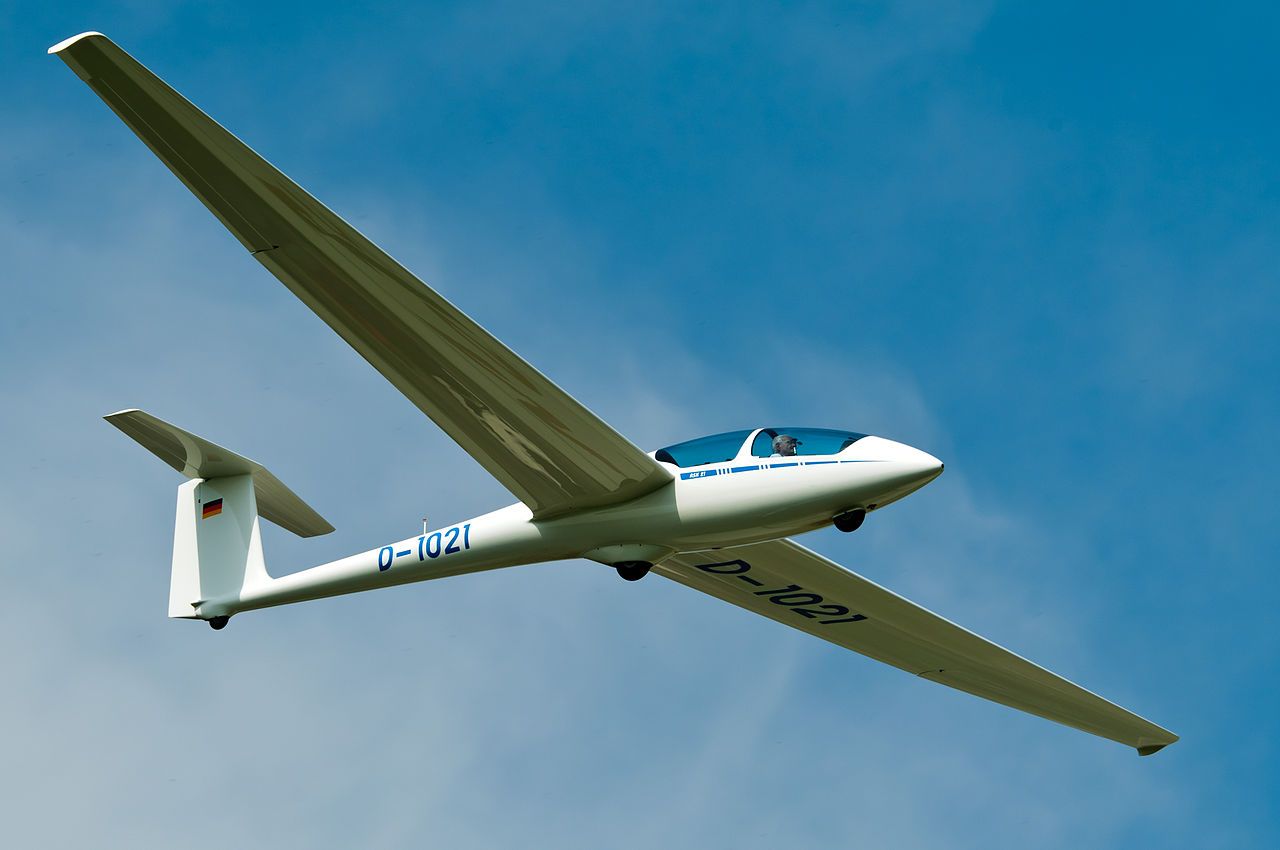
ASK-21 in flight
I paid my £20 and they paired me with a club pilot for my 20-minute ride. We talked a little, I explained that I had a bit of not-so-recent gliding experience, and finally he said something like, “Cheerio then, let’s get going. There’s your parachute; do you know how to put it on?”
Parachute !?
I’d never worn a parachute before—hell, I’d never even seen a parachute close up. Like most normal airplanes, my simple old Schweizer 2-33 trainer didn’t require one. The elegant, high-performance ASK-21, on the other hand, was certified for aerobatics, and by U.K. (and U.S.) law, all passengers must wear chutes. So there I was, with my extensively pregnant wife looking on, struggling to fit on a parachute before taking off in a great white shark of an aerobatic glider. Beth was becoming less amused by the moment.
The winds this particular day were not the usual westerlies, but instead blew from the north, meaning we’d miss out on the beneficial ridge updrafts off the Sutton Bank cliffs. So it was shaping up as a quick-up, quick-down flight, 20 minutes if we were lucky. I finally got suited up and buckled in to the front seat of the ASK-21, waved to Beth as they lowered the clear canopy, and we were ready for takeoff. Helpers snapped on the tow rope, a 200’ polypropylene rope that in turn connects to the towplane, a small but muscularly-engined plane engineered for launching gliders. A few hand signals and the towplane began to move, with our helper running along holding our wingtip until we had enough speed to fly the wings. Off we went down the grass strip, the ASK-21 lifting off quickly powered by its huge wing, trailing the towplane in a gradual climb.
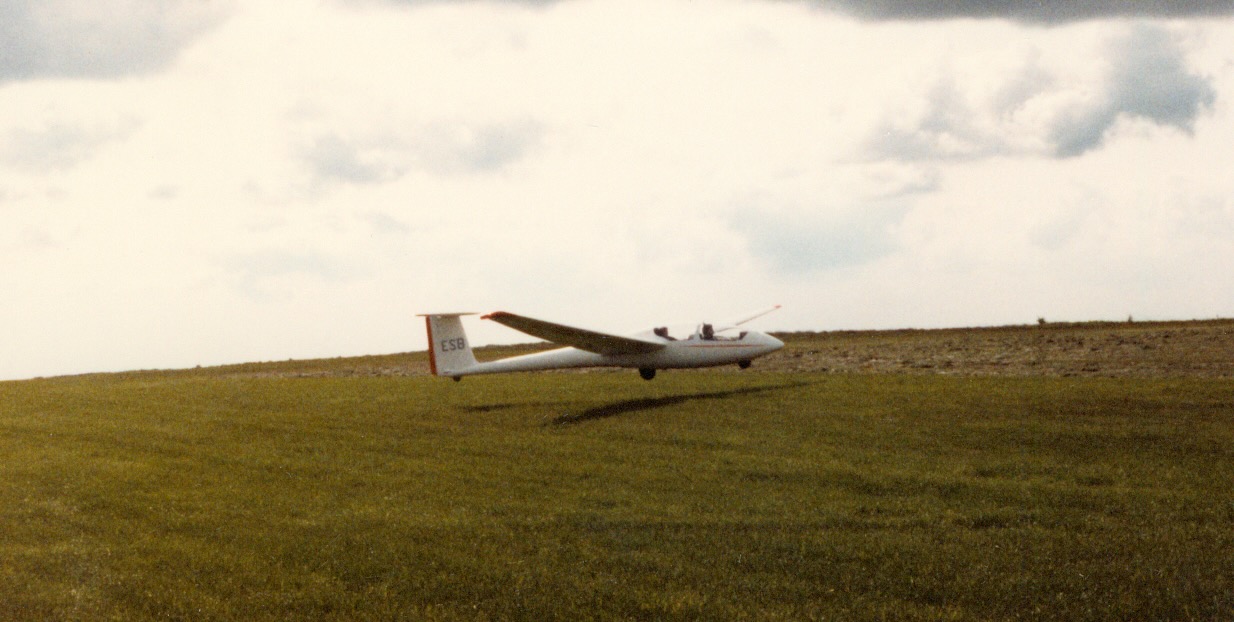
Found a photo of this actual flight! ASK-21 tail number ESB on landing.
It didn’t take long to reach the release height of 2,000 feet. The tow release process is carefully choreographed and well understood by every glider and tow pilot: the glider pilot pulls the release lever, the tow rope pops off with a loud bang, the glider makes a climbing 90 degree to the right, the towplane a descending turn 90 degrees to the left. For us, release should have begun a steady descent back to the field, given the lack of ridge lift and cold temperatures. But almost immediately, we flew into a strong thermal updraft, a column of rising air caused by ground heating, a common phenomenon on hot days but unusual on such a chilly day. There it was, though, and strong: the variometer was showing 3-4 meters/second lift. The pilot circled to stay in the lift column and we were climbing, quickly.
Hot thermal
On that particular day, the bases of the cumulus clouds were around 5,000 feet, and the thermal we climbed within stayed unusually strong all the way up. As we came closer and closer to the cloud base, the pilot began to frantically power up the directional gyro required for instrument flight—essential if we were to climb into the base of the cloud, where we’d be flying blind. A directional gyro takes several minutes to spin up and stabilize, though, and we were already starting to penetrate the cloud base. The average life expectancy of non-instrument-rated pilots who fly into clouds has been calculated as 178 seconds; I’m guessing that instrument-rated pilots without their instruments don’t fare much better. My pilot wisely decided it was time to “get out of Dodge.” He dove down, out of the cloud and away from the thermal lift.
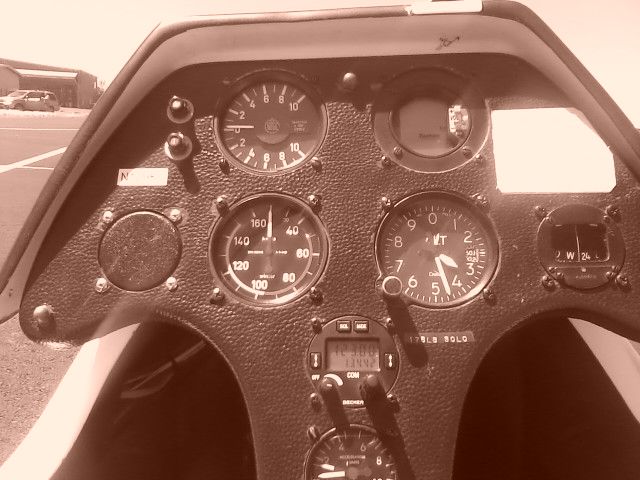
Vintage ASK-21 instrument panel. Mine would have had a few additional (IFR) instruments.
So here we were, at almost 5,000 feet altitude, about 15 minutes into a 20-minute ride. How to burn 5,000 feet of altitude in five minutes? The next thing I heard was the pilot asking, “Do you like aerobatics?” Well, I didn’t really know, because the old Schweizer 2-33 definitely didn’t do aerobatics, but it sounded like fun, so I answered “Sure!” Today’s older, wiser Jack might have paused to consider the effect these aerobatics might have on his wife, waiting 5,000 feet below and already nervous because her husband—wearing a goddamn parachute—had flown off and almost disappeared into the bottom of a cloud.
Aerobatics ?!
He proceeded to point the nose of the ASK-21 at the ground at what felt like a near-vertical angle as I floated weightless, held in place by my seat harness, He let the speed build to the plane’s top speed of 151 knots as we hurdled at the ground. At the last second, he pulled back on the stick, and I melted into the seat as he turned speed back into altitude again, pulling up into a near-vertical climb until the glider lost forward speed and entered a stall. He then kicked the rudder hard left to initiate a stall turn, and the great white beast spun 180 degrees until it was again pointing straight down, accelerating to max speed until the next zoom into another vertical pull-up. We must have repeated this exhilarating maneuver three or four times until we burned off our 5,000’ of excess energy and set up in the landing pattern.

ASK-21 aerobatics including the Stall Turn, from ASK-21 Flight Manual
Poor Beth
Now let’s take a minute to look again at these events from Beth’s perspective. Here she is, eight months pregnant and 3,700 miles away from home. Her fool of a husband has dragged her to a glider port, strapped on a parachute, disappeared into a cloud—and now here he is again, diving towards the ground at 174 MPH, zooming back up, twisting around, hurtling back down, over and over. I have to think that Jennifer was at high risk of being born in Sutton Bank, Yorkshire, UK rather than Cincinnati, Ohio, USA. Amazingly, though, Beth seemed to stay pretty calm through all of this. I stepped from that incredible ASK-21, shrugged out of the parachute harness, and zombie-walked over to her on shaky overexcited legs. Outwardly at least, Beth was the calm one.
Grilled cheese & onion
This magical day delivered one last treat. After the adrenaline rush of the day, we were both exhausted and ravenously hungry, so we pulled into a cozy pub not far down the A170. Here we had a chance to enjoy a classic of pub cuisine: the Grilled Cheese & Onion sandwich. It’s basically a grilled cheese with a thin slice of caramelized onion cooked right in the middle of the melted cheese. Amazingly tasty and the ultimate adrenaline antidote.

Grilled Cheese & Onion. Photo from http://ohmyveggies.com/
So ended the Day to Remember. Or at least my memory of it. Writing this, I feel a strong yearning to return to the Yorkshire Dales.

